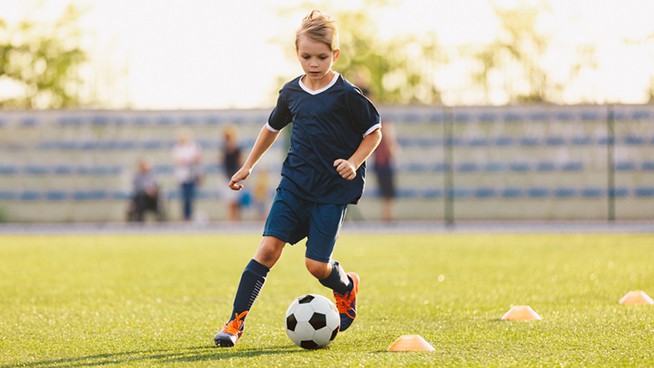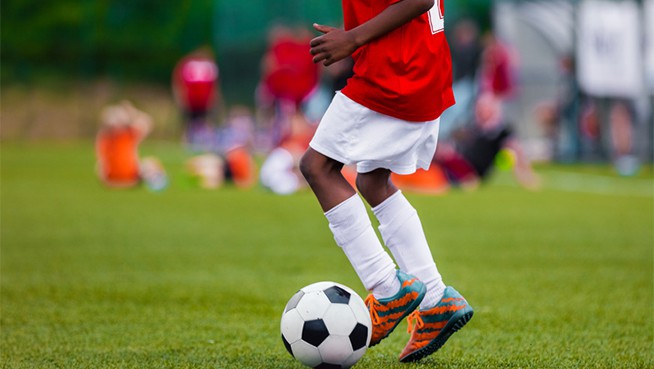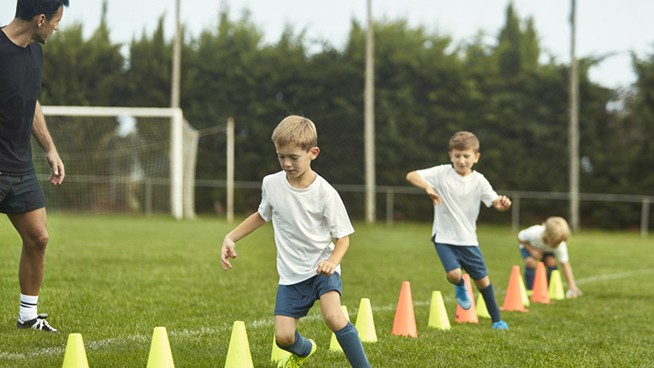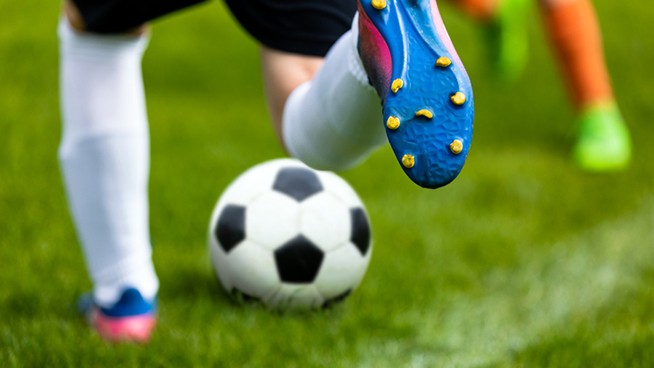FIFA 12 Preview: Player Impact Engine
Defending, tackling and dribbling in virtual soccer now simulate how these skills are executed in real life. That’s the goal of EA Sports for FIFA 12, scheduled for release this fall. The game’s new real-time physics driver, dubbed the Player Impact Engine, offers a nearly unlimited number of physical reactions after players come in contact with each other.
Two years and 55,000 hours in the making, the Player Impact Engine drops motion capture animation in favor of a system that uses game producers’ calculations of physical reactions based on a number of variables—including a player’s size, strength, running speed and angle of collision.
Rather than have player reactions limited by the imagination of FIFA 12 producers, the physics engine makes player-to-player contact look like it does on TV or in the stadium. According to David Rutter, a lead producer for FIFA 12, “We know precisely where on a person’s body the collision occurs, how hard, in what direction—all the physical parameters to be able to calculate in real-time what happened.”
Of course, the engine’s development wasn’t without hiccups. Some animations at the beginning of the process were unrealistic. Rutter says that at times the virtual players would be propelled forward in reaction to a sliding tackle, while other players would do somersaults when colliding with a player. It took time to iron out the kinks.
The different style of gameplay enabled by the Player Impact Engine gave FIFA 12 producers an opening to change other parts of the game—for example, tactical defending and precision dribbling. “We’ve totally changed the way defending works,” Rutter says, noting that in past versions, an individual virtual player, directed by a gamer via the controller, would be launched at an offensive player “like a homing missile.” The defender would either crash into the offensive player without gaining possession of the ball, or trail the offensive player as if the two were in a conga line.
The difference now is that defenders will launch forward, albeit less aggressively, then drop back into a containment strategy. They won’t overcommit, which gives a gamer playing offense more time to think about next steps. “It’s actually decreased the stress and pressure on new users when they’ve got the ball,” Rutter says.
Similarly, stress is reduced when dribbling. A gamer can switch the ball from foot to foot at an easier pace, which, according to Rutter, can alter how a gamer plays offense. There are more dribbling angles to take, which can lead to more passing and scoring opportunities. With that, FIFA 12 could prove to be far more lifelike than any previous title in the series.
Kyle Stack is a New York-based writer/reporter who covers health, technology, business and media in sports. He also writes for SLAM, Wired and ESPN. His work can be found at kylestack.com.
RECOMMENDED FOR YOU
MOST POPULAR
FIFA 12 Preview: Player Impact Engine
Defending, tackling and dribbling in virtual soccer now simulate how these skills are executed in real life. That’s the goal of EA Sports for FIFA 12, scheduled for release this fall. The game’s new real-time physics driver, dubbed the Player Impact Engine, offers a nearly unlimited number of physical reactions after players come in contact with each other.
Two years and 55,000 hours in the making, the Player Impact Engine drops motion capture animation in favor of a system that uses game producers’ calculations of physical reactions based on a number of variables—including a player’s size, strength, running speed and angle of collision.
Rather than have player reactions limited by the imagination of FIFA 12 producers, the physics engine makes player-to-player contact look like it does on TV or in the stadium. According to David Rutter, a lead producer for FIFA 12, “We know precisely where on a person’s body the collision occurs, how hard, in what direction—all the physical parameters to be able to calculate in real-time what happened.”
Of course, the engine’s development wasn’t without hiccups. Some animations at the beginning of the process were unrealistic. Rutter says that at times the virtual players would be propelled forward in reaction to a sliding tackle, while other players would do somersaults when colliding with a player. It took time to iron out the kinks.
The different style of gameplay enabled by the Player Impact Engine gave FIFA 12 producers an opening to change other parts of the game—for example, tactical defending and precision dribbling. “We’ve totally changed the way defending works,” Rutter says, noting that in past versions, an individual virtual player, directed by a gamer via the controller, would be launched at an offensive player “like a homing missile.” The defender would either crash into the offensive player without gaining possession of the ball, or trail the offensive player as if the two were in a conga line.
The difference now is that defenders will launch forward, albeit less aggressively, then drop back into a containment strategy. They won’t overcommit, which gives a gamer playing offense more time to think about next steps. “It’s actually decreased the stress and pressure on new users when they’ve got the ball,” Rutter says.
Similarly, stress is reduced when dribbling. A gamer can switch the ball from foot to foot at an easier pace, which, according to Rutter, can alter how a gamer plays offense. There are more dribbling angles to take, which can lead to more passing and scoring opportunities. With that, FIFA 12 could prove to be far more lifelike than any previous title in the series.
Kyle Stack is a New York-based writer/reporter who covers health, technology, business and media in sports. He also writes for SLAM, Wired and ESPN. His work can be found at kylestack.com.












